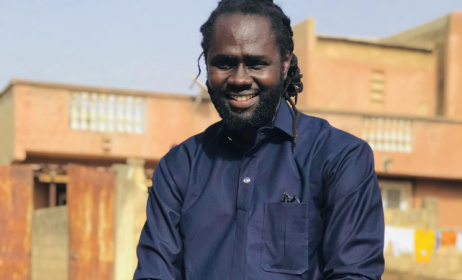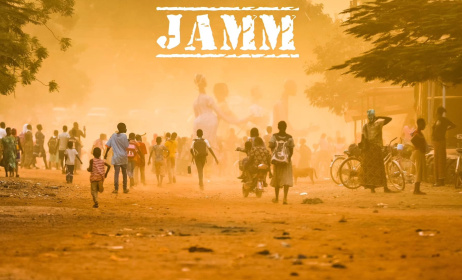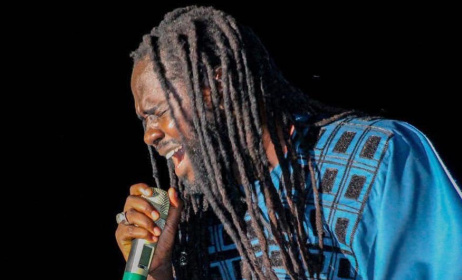The rise of Zim-Dancehall
By Kumbie Shoniwa
 Winky D
Winky D
Zim-Dancehall owes its origins to Jamaican reggae music which was popularised in the country by Bob Marley’s memorable performance at independence in 1980. Subsequent visits by other reggae artists such as UB40 (1984), Shabba Ranks (1993), Sizzla Kalonji (2010) and Capleton (2010) - among others - led to a number of people following of the genre as can be witnessed by massive turnouts at the events. Local artists began to sing their own version of the dancehall type of reggae in the 1990’s with chanters such as Major E, Booker T and Potato gaining fans with their Jamaican-style lyricism.
However, the rise of Zim-Dancehall in its present form began after 2000 with the increase of so-called ‘backyard studios’, which made use of cheap computer software to produce relatively quality music. Artists such as Wallace ‘Winky D’ Chirumiko and King Labash gained popularity with Shona hits like ‘Chaputika’ and ‘Kukonzeresa’, proving that local musicians could also produce and give a local flavour to international music.
Subsequent visits by Jamaican artists to Zimbabwe began to show that local fans were beginning to appreciate their own artists over the highly-rated foreign acts. In 2011 dancehall stars Sean Kingston and Mr Vegas came to Zimbabwe and received a rude awakening when local fans booed them offstage in preference of Zim artists such as Winky D and Donald ‘Sniper Storm’ Chirisa.
As each high-density area (ghetto) began churning out their own dancehall producers and artists, more people began to appreciate the genre mostly because it is performed in vernacular languages. In 2013, Zim-Dancehall finally gained full recognition as a serious music genre in the country when a show was organized which was aptly entitled The Battle for the King and Queen of Zim-Dancehall, featuring Jamaican star Sheldon ‘Turbulence’ Campbell as a special guest. In early 2014, the first Zim-Dancehall Music Awards were held in honour of artists, producers, promoters as well as entertainment journalists who supported the rise of the music form.
Key artists and producers
The ‘king’ of Zim-Dancehall is arguably Winky D, who walked away from the last awards with four nominations including Best Male Artist. The artist has been around since the beginning of the genre and has proven his mettle onstage alongside top Jamaican artists including Sean Paul, Capleton (2010) with some reports suggesting that he stole the show from both Sean Kingston and Mr Vegas in 2011. Winky D’s popular hits include ‘Musarove Bigiman’, ‘Green Like Me Garden’, ‘Paita Party’ and a collaboration with Jamaican dancehall singer Hawkeye titled ‘Bassline Rock’.
The sprawling neighbourhood of Chitungwiza is the domain of Zim-Dancehall’s leading female artist Muchaneta ‘Lady Squanda’ Gazi, who has also ventured into acting. She has been linked to controversy in recent times with accusations of faking her own death to gain popularity to stealing gate takings at a show. Her songs include ‘Handidi Kukutadzira’ featuring Freeman, ‘I Like That’ (2012), ‘Holy Ghost’ (2012) and ‘Squanda Fire’. She has been to the UK and South Africa, where she has staged shows for mostly Zimbabwean nationals.
Saul ‘Soul Jah Love’ Musaka is currently riding a wave of success both locally and in communities of Zimbabweans living outside the country. The chanter shot to fame in 2013 with a controversial song called ‘Gum Kum’, whose sexual connotations can be seen in the video of the track. A versatile artist whose style swings from relaxed and effortless to militant and aggressive, he has been endorsed by a local clothing manufacturer to market their fashionable outfits. A previous sponsor has also provided the artist with a classy H2 Hummer vehicle, which he was spotted driving in and around Harare. Other hit songs include ‘Minana’, ‘This Time’, ‘Makonzo’ and ‘Kunhamo kwa Boris’.
Tawanda ‘Seh Calaz’ Mumanyi hails from Mbare, Harare’s oldest high-density suburb, and has a hit song called ‘Mumota Murikubvira’ featuring Jamaican artist Turbulence, which was produced during the latter’s brief visit to Zimbabwe late 2013. Mumanyi has a smooth voice, which he uses to deliver songs that mainly portray life in his bustling neighbourhood, including ‘Mabhanditi’, ‘Basa Rangu’, ‘Marasta Maoko Mudenga’ and ‘Varikuumba Daka’ featuring Soul Jah Love. He has also joined other artists in staging shows outside the country in South Africa, the UK and Australia.
Another Zim-Dancehall chanter, Emmanuel ‘Guspy Warrior’ Manyeruke is the son of veteran gospel artist Mechanic Manyeruke, who is also a pastor. However, the son’s lyrics are far from spiritual as his songs are mainly centred on secular issues including partying, relationships and drug abuse. Popular tracks include ‘Ita Seunonoga’, ‘Tipe Timonemone’ and ‘Dancehall Champion’ featuring Dhadza D and Sniper Storm.
The rapid rise of Zim-Dancehall in recent years, thanks largely to the popularity of the artists outlined above, is a good example of the enduring influence of Caribbean music on the continent, and undoubtedly represents one of the most significant trends in popular music in Zimbabwe over the past decade.



























Commentaires
s'identifier or register to post comments